It is interesting what you can learn by reading articles in magazines and on the internet.
However, much of what is published is written by people who may not have access to original source data and, as a result, may draw unreliable conclusions, repeat errors made by others or simply make stuff up.
That is just what happened with the story of the development of the .425 Westley Richards; a remarkable cartridge, years ahead of its time in many ways.
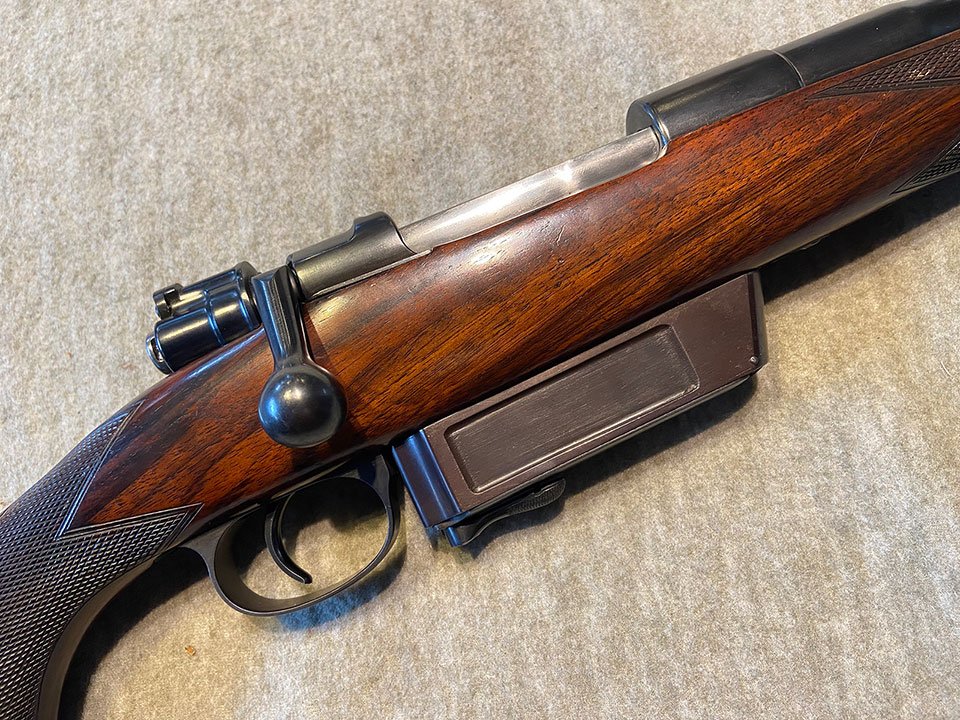
It is a proven big game killer, despite having fallen largely out of commercial favour with the big-scale rifle makers. In fact, the only company now making rifles in this chambering appears to be Westley Richards.
The .425 WR could legitimately be described as the first short magnum and it originated because of the desire to create a big-game-capable magazine rifle to compete with the .404 Jeffery in power but which could be built into a standard Mauser ’98 action.
It would appear that in 1909, when Westley Richards’ Managing Director, Leslie B. Taylor devised the .425 WR, that Magnum Mauser actions were hard to come by, whereas standard Mauser actions were plentiful.
For speed-loading, Mausers, typically chambered for 7x57 and 8x57, could be fed with a stripper-clip. This was a desirable feature, very useful to game wardens culling large numbers of elephant or buffalo and Leslie Taylor wanted to retain it as a loading system.
a new cartridge with the same base as the 8x57 but a case width closer to the .404 Jeffery
The plan he devised was to create a new cartridge with the same base as the 8x57 but a case width closer to the .404 Jeffery, packed with 65 grains of Cordite and a bullet weighing 410-grains.
The round achieved 2,350 fps and delivered 5,010 ft/lbs of energy. That compares very favourably with most contemporary rivals and some popular cartridges which arrived later:

The rebated rim caused issues with feeding in a Mauser action. Getting the bolt-head to pick up the rim reliably yet not allow the, round rising under spring pressure from the magazine, to jump out of the action, required a set of guides to provide the extra purchase on the case necessary to deliver a reliable feed.
These two guides are visible from above. They are spring loaded and when the bolt is pulled back, they slip into place, ensuring the cartridge lines-up correctly and the bolt head is positioned where it can gain purchase on the rim. When the bolt is pushed forward, the guides slide out of the way.
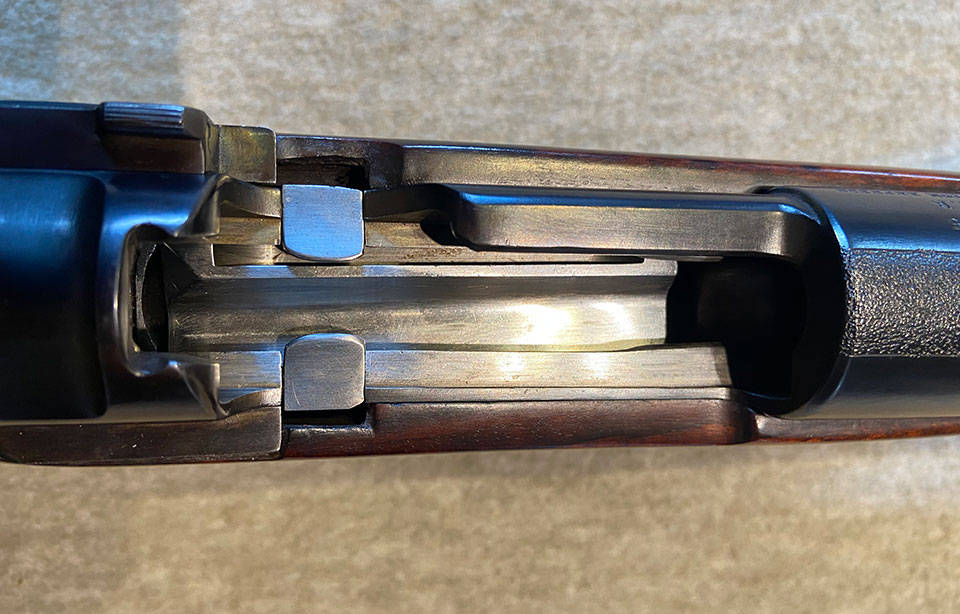
It is a good modification and it works.
The original rifles held five cartridges in the box magazine and one in the chamber. The large box magazine is a distinctive feature of the .425 but some customers in recent times have asked for a version with a neater-looking flush fitting floor-plate. This is done by reducing capacity to three cartridges, plus one in the chamber.
At least two American articles, both of which can be found on-line, claim that some .425 Westley Richards rifles were made with a five-shot, straight-stack magazine, rather than the staggered type now built.
One claims it was the original pattern, the other that is was a later development to improve the performance of inexpensive ‘White Hunter’ models of the .425, which lacked the twin guides of the higher quality rifles and which could prove problematic when worn.
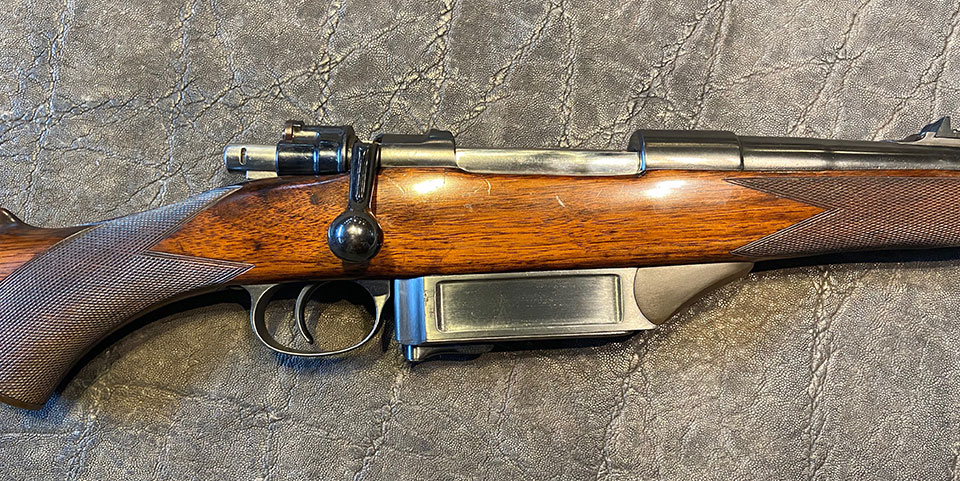
I think both writers are wrong. I have never seen a ‘single-stack’ magazine .425 WR and neither have any of the current team of gunmakers at Westley Richards, nor indeed, the Managing Director. It would appear that this assertion is based on supposition or simple error. Evidence would suggest that even very early incarnations of the .425 were made with staggered-column magazines. Later ones certainly were.
Not only did it boast the stopping power of a true big game rifle, it proved civilised to shoot.
Taylor, the notorious hunter/poacher and writer of African Rifles & Cartridges said ‘There is no question, it is a most excellent cartridge and a real killer’. He did, however remonstrate with the maker for the ‘absurdly long’ twenty-eight-inch barrel the early rifles had fitted as standard.
He especially rated it for lion shooting and recalled the great improvement in culling success achieved by native game wardens, once they were equipped with .425s.
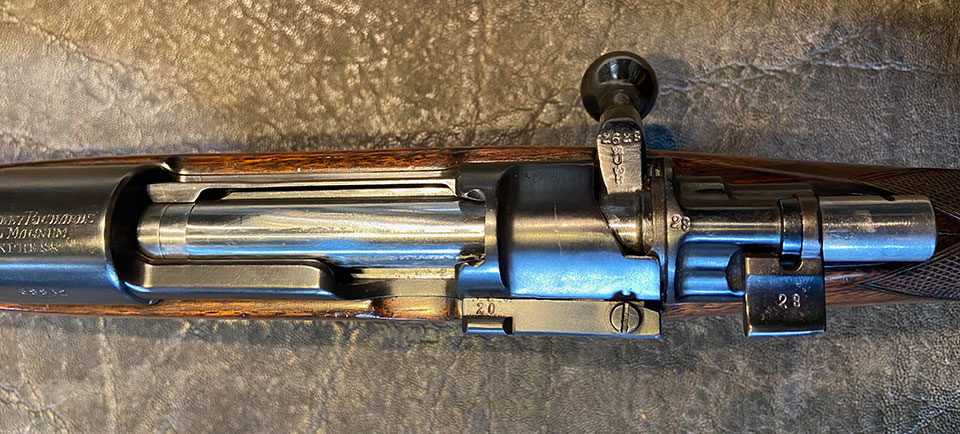
Today, interestingly, the .425 Westley Richards is still in demand by customers of the firm. They typically build one or two every year.
To supply their customers, Westley Richards have ammunition made to order by Kynoch, conforming to the original load specifications, though modern powders make it a little more potent than the original.
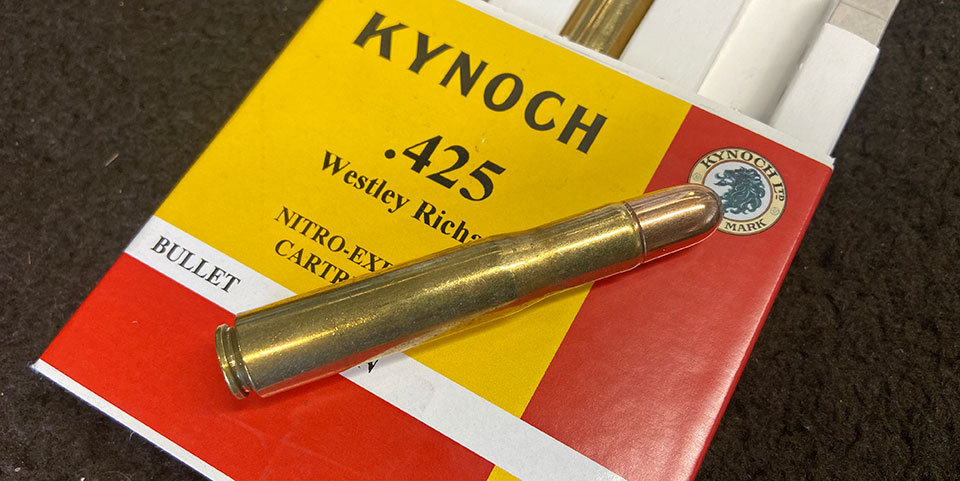
Building a .425 WR is a more time-consuming and complex job than building most Mauser action rifles. The guides, followers, action walls, bolt-face and chamber must all be meticulously finished and aligned to very fine tolerances.
Perhaps it is this extra time and money involved in the building of these rifles that is to blame for its lack of wider adoption in rifles of more modest cost. When settling on cartridges for rifles intended for the general public, there have long been plenty of other options that were cheaper to build.
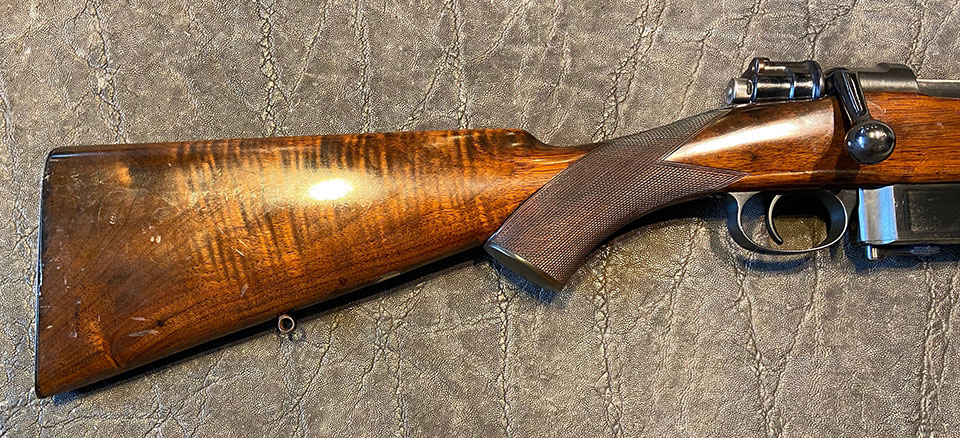
Nowadays, short magnums are plentiful but back in 1909, when Leslie Taylor devised the .425 and created the, then, most powerful magazine rifle cartridge in the world, it was he who started the trend.
Now, if any readers can find me a straight-stacking-magazine example of the .425 Westley Richards, I’ll be happy to buy them a drink - and so too might on or two American writers who shall remain nameless! In the meantime, I’ll be walking my unicorn.
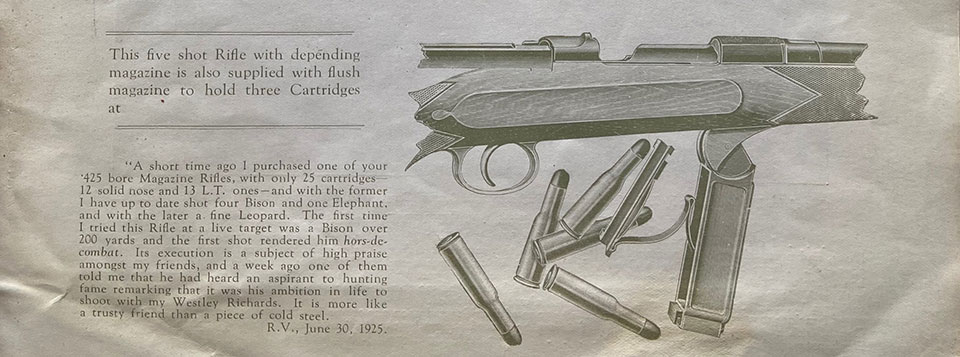
Published by Vintage Guns Ltd on (modified )




